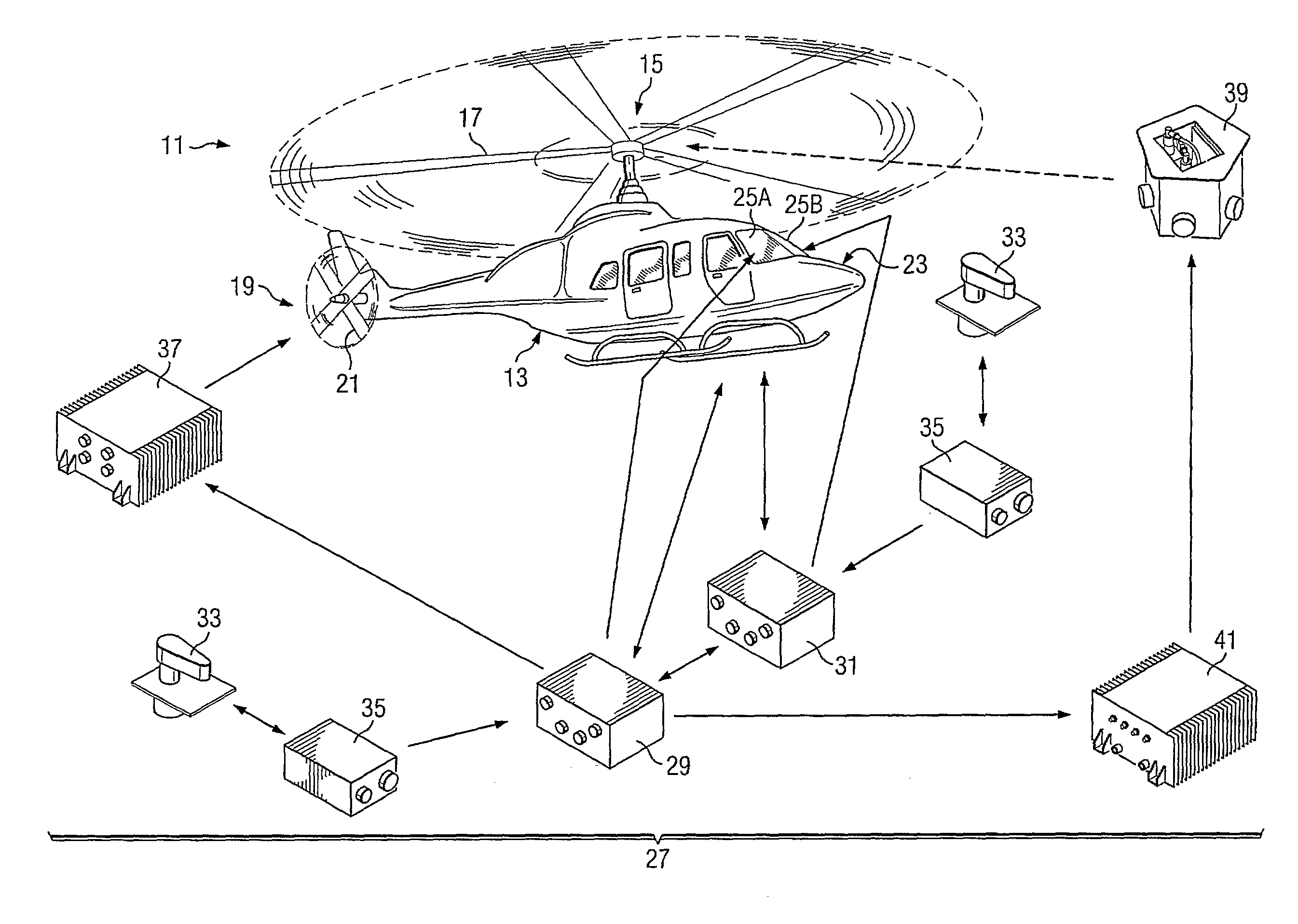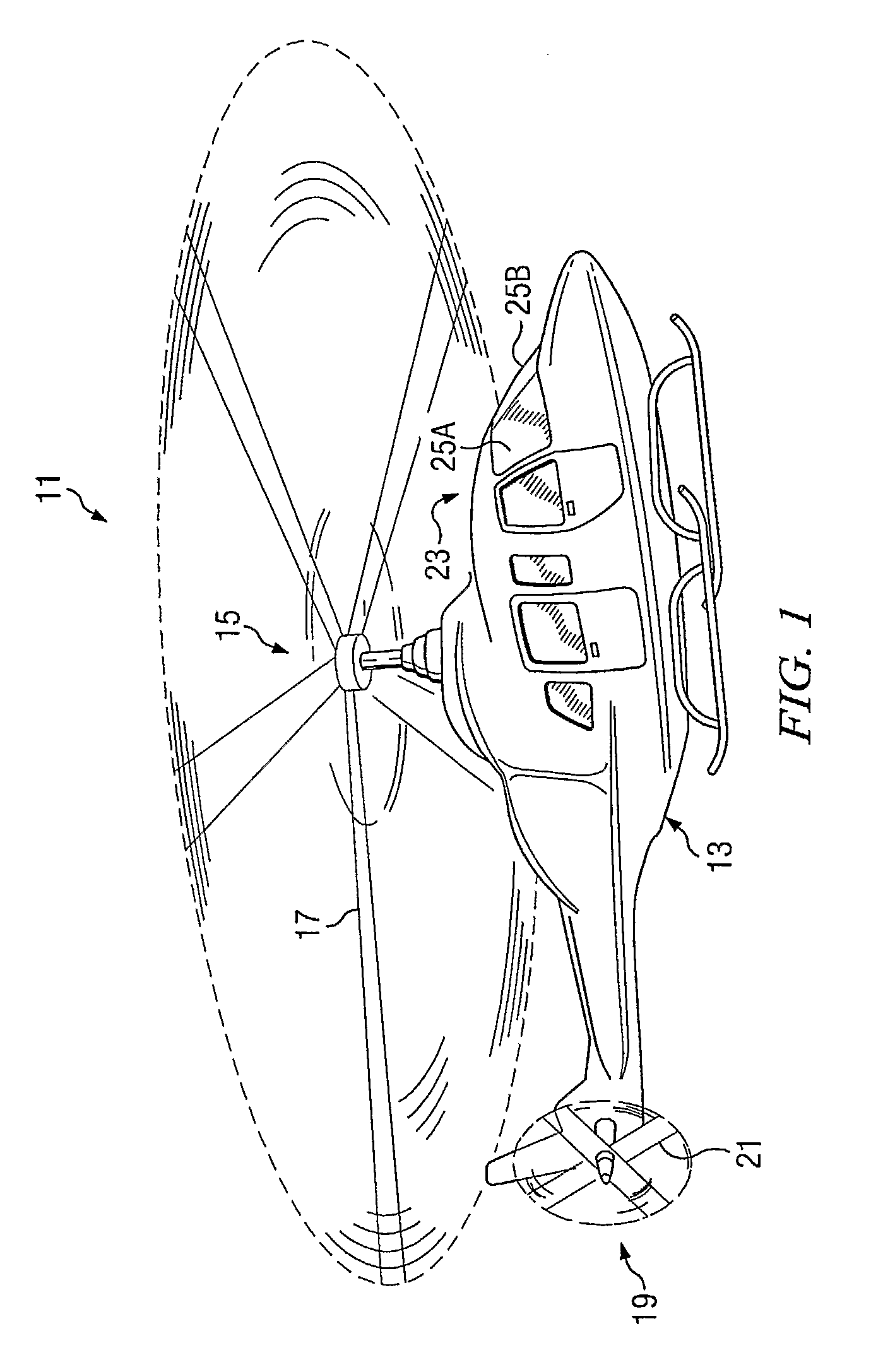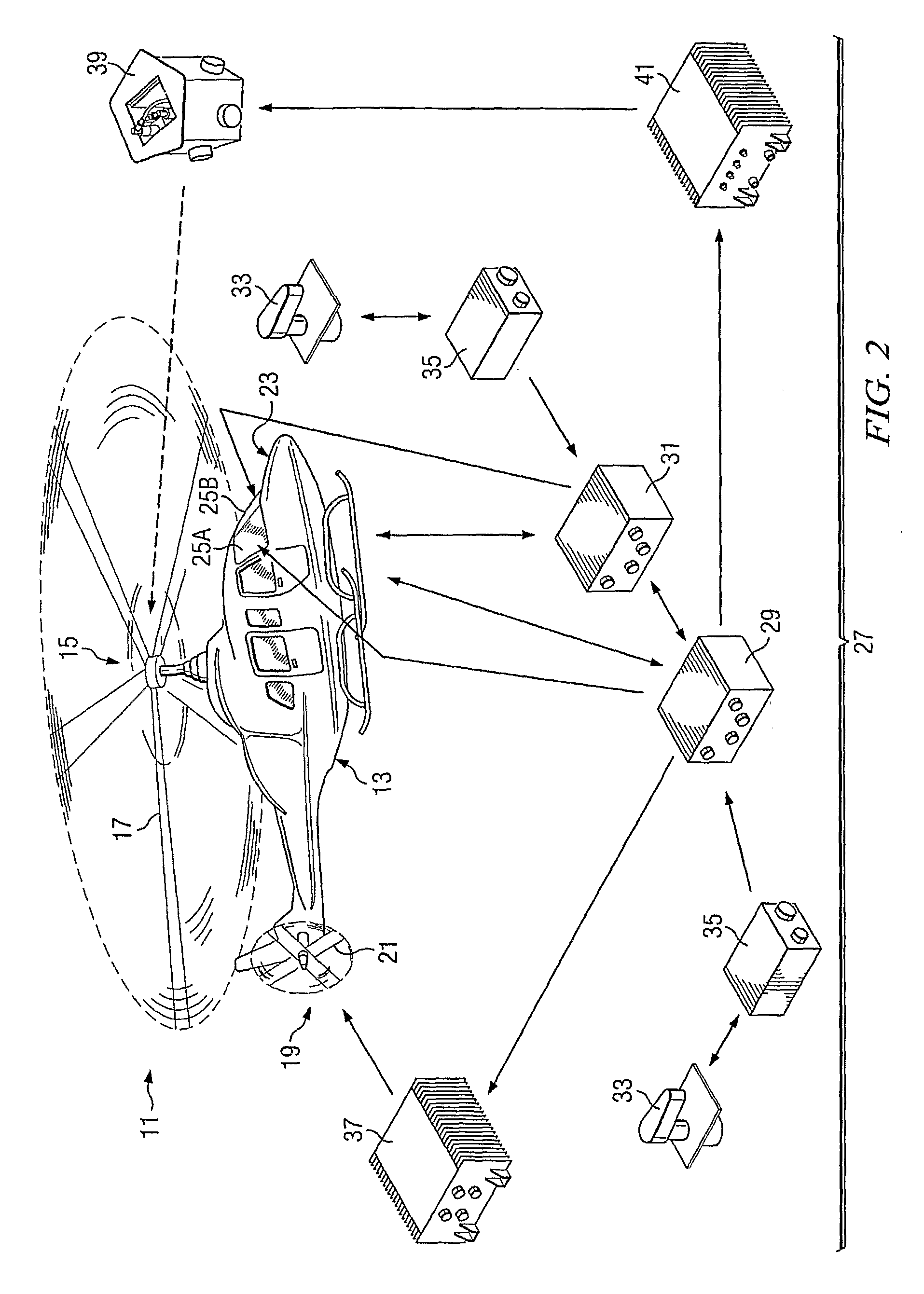Ice management system for rotary-wing aircraft
a technology for rotary-wing aircraft and ice management, which is applied in the direction of liquid fuel engines, marine propulsion, and vessel construction, etc., can solve the problems of low emi, helicopters are not equipped with ice protection devices such as de-ice and/or anti-ice components, and the types of ice management components, such as inflatable boots, are inappropriate for helicopter use, etc., to achieve low emi and reduce complexity
- Summary
- Abstract
- Description
- Claims
- Application Information
AI Technical Summary
Benefits of technology
Problems solved by technology
Method used
Image
Examples
Embodiment Construction
[0022]The present invention is an ice management system for rotary-wing aircraft, having a 3-phase alternating-current (AC) power generation system. The system is especially useful on aircraft having at least one rotor with a number of blades that is not a multiple of 3, including both main and tail rotors of helicopters and prop-rotors of tiltrotor aircraft.
[0023]The system incorporates ice protection devices, such as anti-ice and / or de-ice components, carried by the blades of the rotors, and these devices may include electro-thermal heating elements, parting strips, and / or other appropriate devices located in selected areas of the blades. Three-phase AC generators are a good means of supplying electric power for use on-board the aircraft because the generators have reduced size and complexity compared to a direct-current (DC) generator system. The system of the invention overcomes the problems inherent in using 3-phase AC power with a rotor having a number of blades that is not a ...
PUM
 Login to View More
Login to View More Abstract
Description
Claims
Application Information
 Login to View More
Login to View More - R&D
- Intellectual Property
- Life Sciences
- Materials
- Tech Scout
- Unparalleled Data Quality
- Higher Quality Content
- 60% Fewer Hallucinations
Browse by: Latest US Patents, China's latest patents, Technical Efficacy Thesaurus, Application Domain, Technology Topic, Popular Technical Reports.
© 2025 PatSnap. All rights reserved.Legal|Privacy policy|Modern Slavery Act Transparency Statement|Sitemap|About US| Contact US: help@patsnap.com



